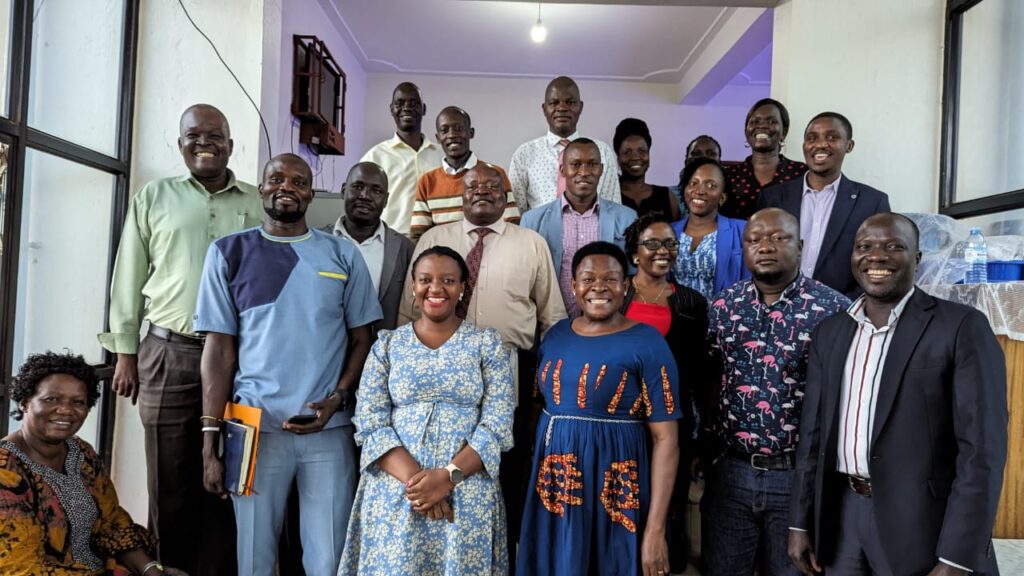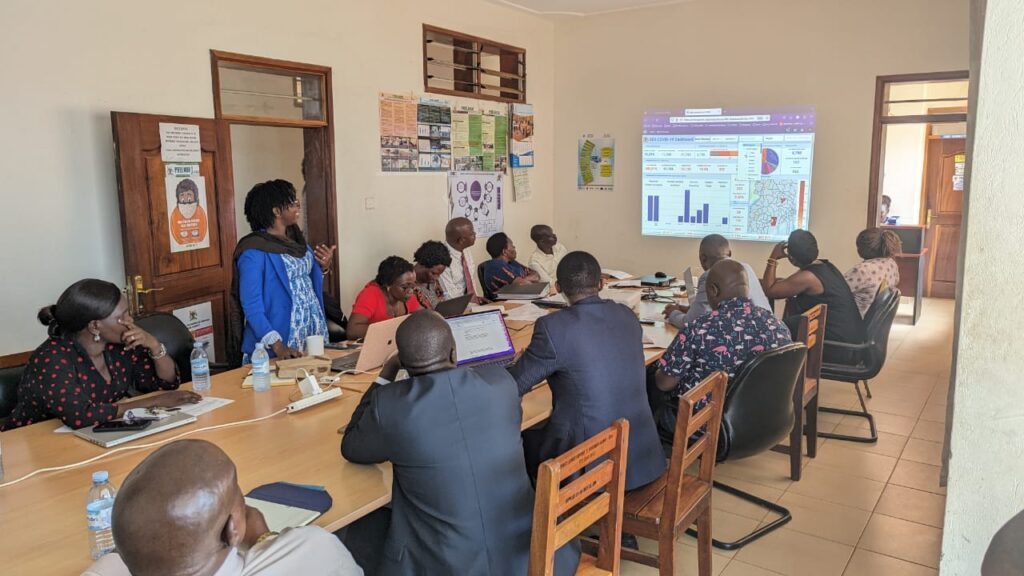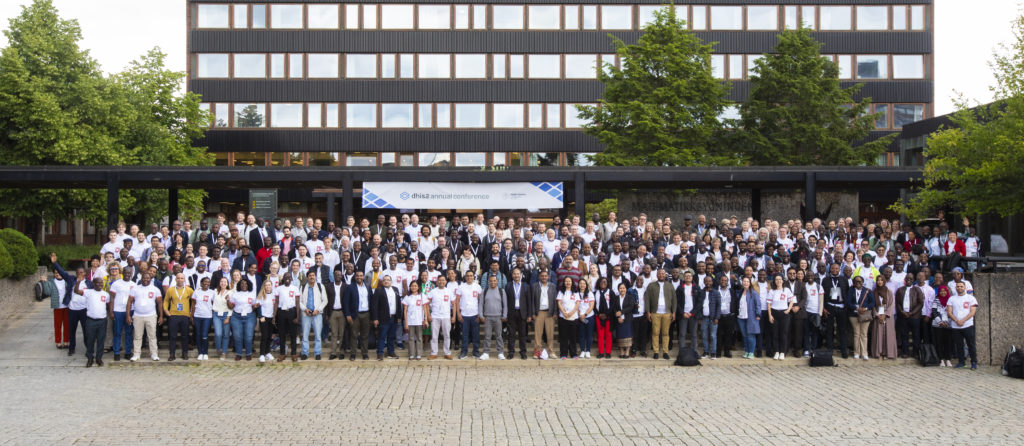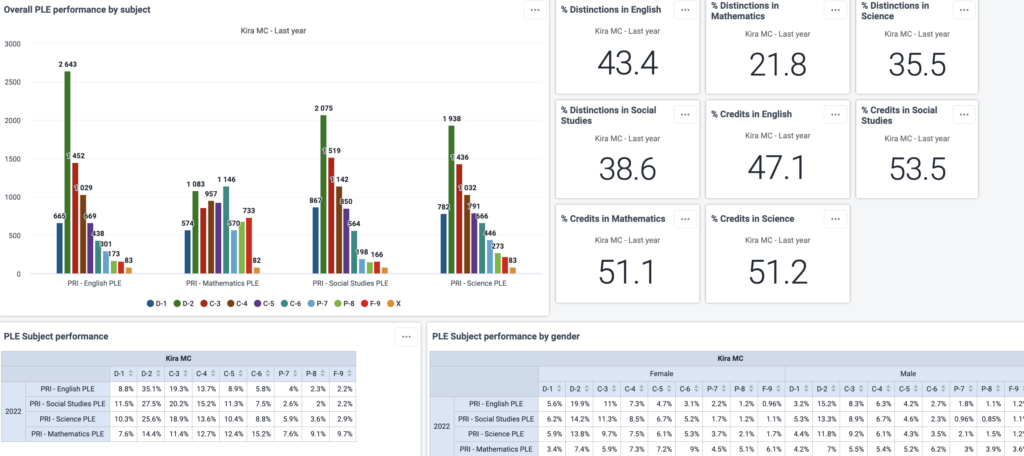
Signing of a Memorandum of Understanding
On 20th June 2023, an MoU was signed between Gulu district local government and HISP Uganda continuing efforts to improving the management and utilization of education data to inform planning, monitoring and resource allocation for better education service delivery and provision of quality education in the district. This MoU creates an opportunity for establishing Gulu District as a model District of Excellence (DoE) for knowledge generation and sharing, strengthening management and utilization of data, promoting cross-sectoral collaborations and learning, and informing scaling of innovations.
The signing of the MoU preceded a stakeholders’ meeting that reviewed progress on the ongoing implementation of the DHIS2 for Education project in the district. This meeting was attended by the district leadership including the Chief Administrative Officer (CAO), Resident district Commissioner (RDC), Chairperson LCV, the technical teams from both health and education departments, district planner, district executive committee, Assistant Commissioner Special Needs Education at the Ministry of Education and Sports and the HISP Uganda team.
During the meeting the education and health teams demonstrated how the DHIS2 platform had improved ease of reporting, data visualization, and availability of data for use. A mutual agreement was reached that DHIS2 was a key platform that would be leveraged to strengthen and improve data management and use within the district level. Specific stakeholder roles and responsibilities were highlighted with an emphasis on promoting data access and sharing for monitoring and use of the data. Following this meeting, the draft MoU was reviewed, updated and signed off with a common commitment to use the DHIS2 in both education and health departments for improved data management and use within the district.

Transforming education data management at Gulu District Local Government using DHIS2
Gulu district local government is one of the four districts in addition to Mayuge, Ntungamo and Wakiso connected to the DHIS2 for Education project in Uganda. This project is led by the Ministry of Education and Sports Basic Education Department in collaboration with HISP Uganda, Save the Children Uganda and with funding support from Norad and the IDRC Global Partnership for Education KIX Project. The project focuses on empowerment of district level managers in collection, analysis and utilization of education data for planning, monitoring, resource allocation and data driven-decision making aimed for provision of quality education.
Gulu district education department was set up with shared wireless internet, computers, printers and technical support to collect, enter, analyze and utilize their education data was provided through numerous capacity building activities like hands on end user trainings and support supervisions. The implementation has improved education data management in the district, supporting the education department to be more effective in planning, reporting and making decisions based on available data. The inbuilt analytic tools have improved data visualization through easy to navigate dashboards easing data dissemination and use by the various stakeholders.
With access to more routine data, the district has lobbied for additional resources for the construction of classroom ramps at Ajulu, Angaya, Cwero and Lapuda primary schools to cater for children with disabilities. With a low number of learners having meals at school, more parents have been sensitized on the importance of school feeding while analysis of data on absenteeism informed community sensitization through radio talk shows emphasizing the importance of keeping learners in school. These data use cases demonstrate the value of timely data at district level for effective actioning.
The project has improved feedback mechanisms within the district, where school status dashboards with key school level indicators like pupil teacher ratio, pupil stance ratio, percentage of special needs learners, learner and teacher absenteeism etc have been designed and accessed by school level administrators. This analysis has been pivotal in developing school improvement plans based on gaps identified.
In addition, the implementation has enhanced cross sectoral collaboration between the health and education departments where the flexibility of the platform was leveraged to respond to Covid-19 through school based surveillance. The health teams worked together with the school inspectors to register school level reporters and train on SMS reporting. This further demonstrates the platform’s model of cross learning and utilization of existing in-country capacity from the health sector to support DHIS2 for Education.
Establishment of a District of Excellence
With the implementation of the school based surveillance and other school health programs like immunization, Malaria prevention within learning institutions, the district committed to strengthen the relationship and collaboration between the health and education departments. This will form a basis for strengthening cross sectoral collaboration with other sectors like community development, transport (Infrastructure) and ensure cross cutting issues are holistically addressed. The establishment of the District of Excellence model will be hinged on peer-to-peer learning leveraging more than 10 years of existing capacity in use of DHIS2 at the district health department to support the education department. The district will be a hub for testing innovations for data quality improvement, geospatial data for micro planning and the documentation of best practices that will inform scale.







